"Time": models, code, and papers
Predicting colorectal polyp recurrence using time-to-event analysis of medical records
Nov 18, 2019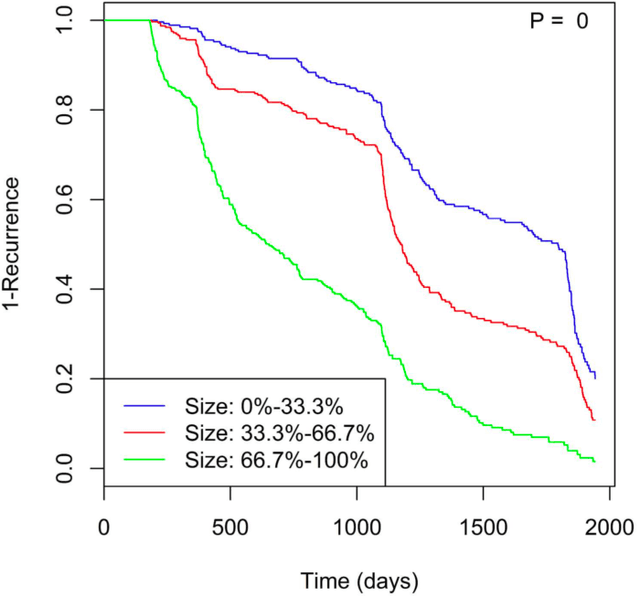
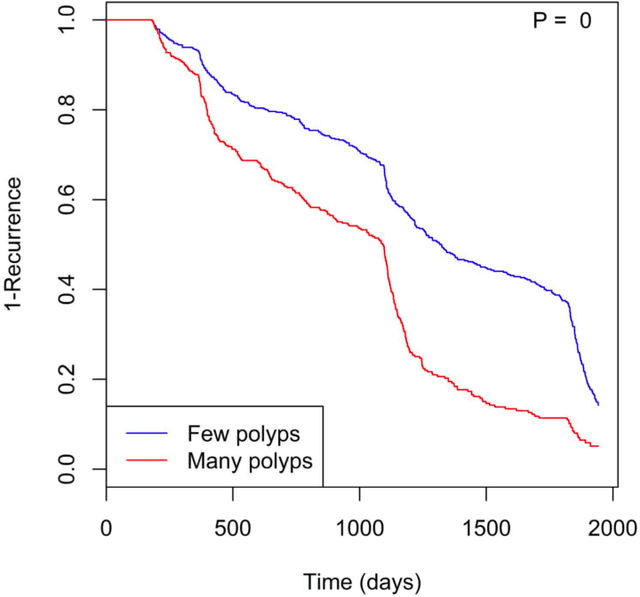
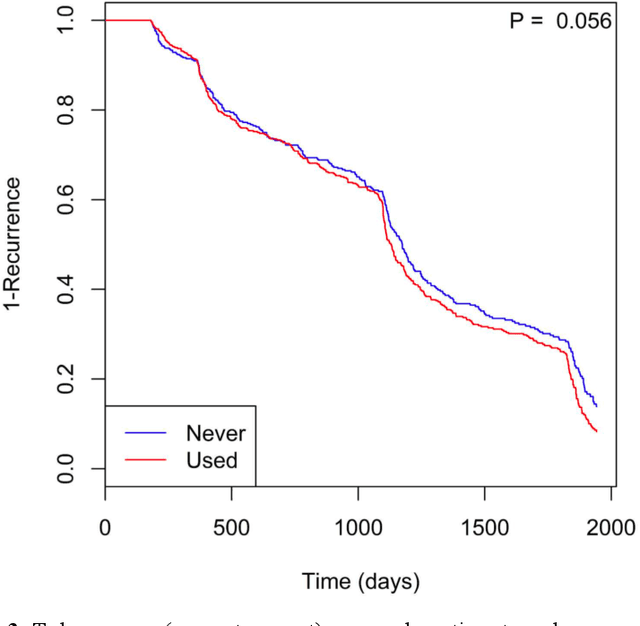
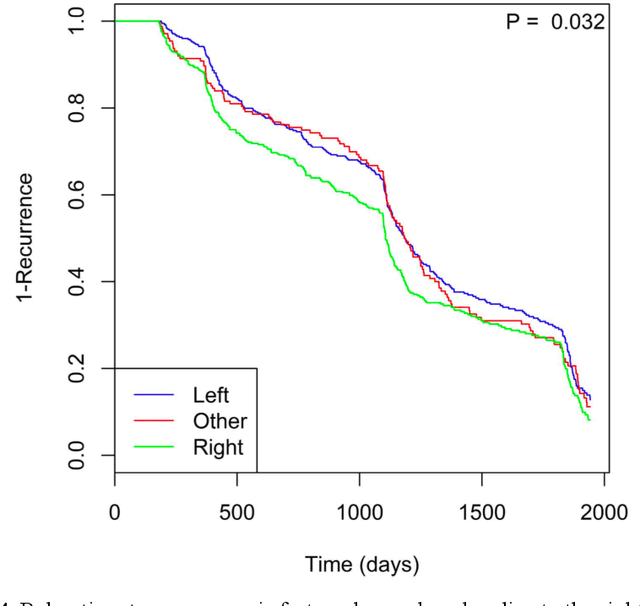
Identifying patient characteristics that influence the rate of colorectal polyp recurrence can provide important insights into which patients are at higher risk for recurrence. We used natural language processing to extract polyp morphological characteristics from 953 polyp-presenting patients' electronic medical records. We used subsequent colonoscopy reports to examine how the time to polyp recurrence (731 patients experienced recurrence) is influenced by these characteristics as well as anthropometric features using Kaplan-Meier curves, Cox proportional hazards modeling, and random survival forest models. We found that the rate of recurrence differed significantly by polyp size, number, and location and patient smoking status. Additionally, right-sided colon polyps increased recurrence risk by 30% compared to left-sided polyps. History of tobacco use increased polyp recurrence risk by 20% compared to never-users. A random survival forest model showed an AUC of 0.65 and identified several other predictive variables, which can inform development of personalized polyp surveillance plans.
From Implicit to Explicit feedback: A deep neural network for modeling sequential behaviours and long-short term preferences of online users
Jul 26, 2021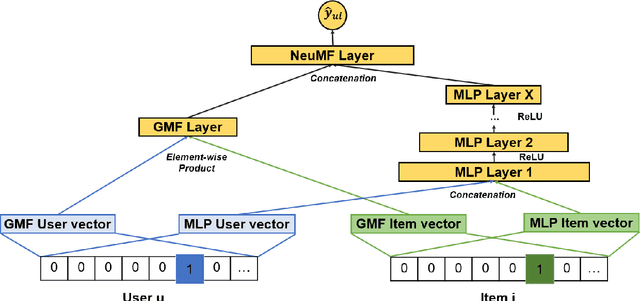
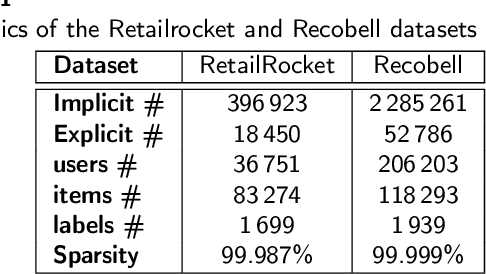
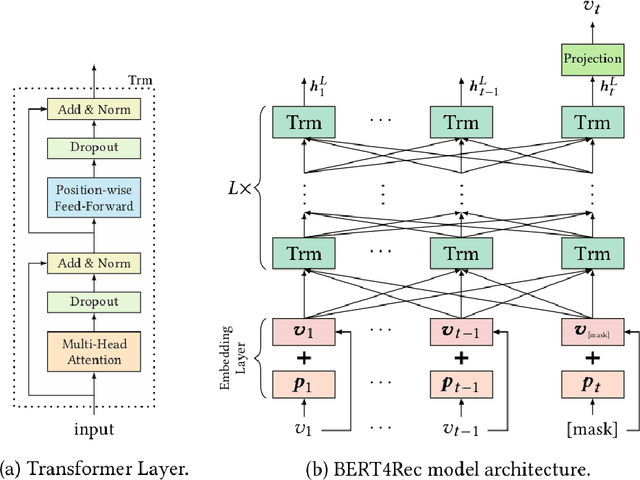
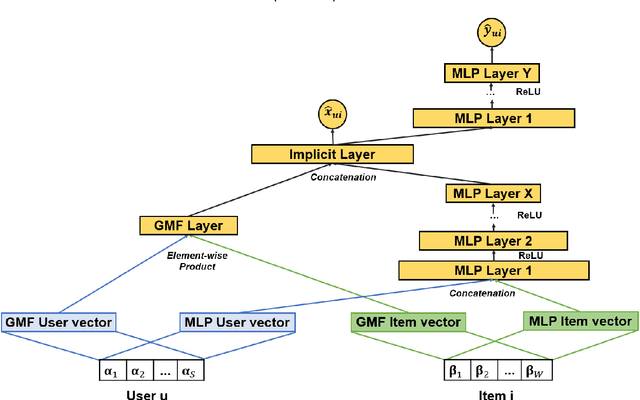
In this work, we examine the advantages of using multiple types of behaviour in recommendation systems. Intuitively, each user has to do some implicit actions (e.g., click) before making an explicit decision (e.g., purchase). Previous studies showed that implicit and explicit feedback have different roles for a useful recommendation. However, these studies either exploit implicit and explicit behaviour separately or ignore the semantic of sequential interactions between users and items. In addition, we go from the hypothesis that a user's preference at a time is a combination of long-term and short-term interests. In this paper, we propose some Deep Learning architectures. The first one is Implicit to Explicit (ITE), to exploit users' interests through the sequence of their actions. And two versions of ITE with Bidirectional Encoder Representations from Transformers based (BERT-based) architecture called BERT-ITE and BERT-ITE-Si, which combine users' long- and short-term preferences without and with side information to enhance user representation. The experimental results show that our models outperform previous state-of-the-art ones and also demonstrate our views on the effectiveness of exploiting the implicit to explicit order as well as combining long- and short-term preferences in two large-scale datasets.
Random Warping Series: A Random Features Method for Time-Series Embedding
Sep 14, 2018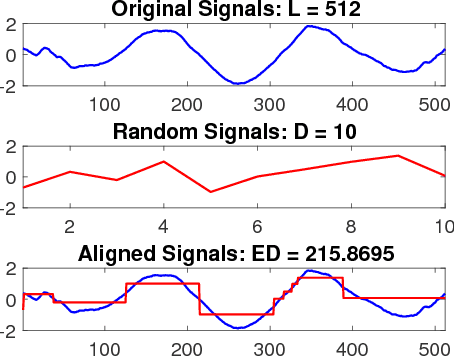
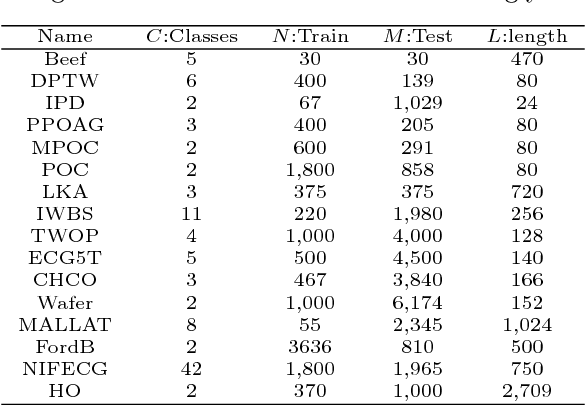
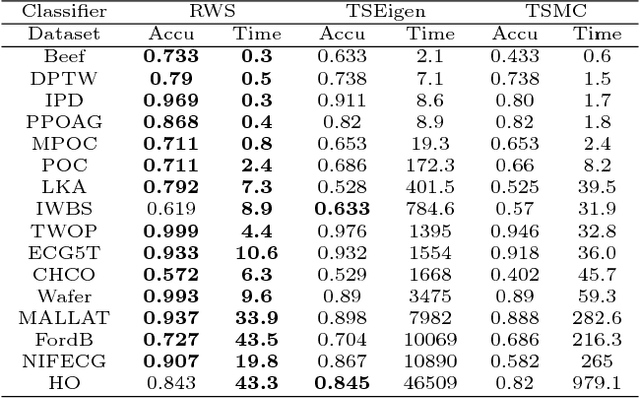

Time series data analytics has been a problem of substantial interests for decades, and Dynamic Time Warping (DTW) has been the most widely adopted technique to measure dissimilarity between time series. A number of global-alignment kernels have since been proposed in the spirit of DTW to extend its use to kernel-based estimation method such as support vector machine. However, those kernels suffer from diagonal dominance of the Gram matrix and a quadratic complexity w.r.t. the sample size. In this work, we study a family of alignment-aware positive definite (p.d.) kernels, with its feature embedding given by a distribution of \emph{Random Warping Series (RWS)}. The proposed kernel does not suffer from the issue of diagonal dominance while naturally enjoys a \emph{Random Features} (RF) approximation, which reduces the computational complexity of existing DTW-based techniques from quadratic to linear in terms of both the number and the length of time-series. We also study the convergence of the RF approximation for the domain of time series of unbounded length. Our extensive experiments on 16 benchmark datasets demonstrate that RWS outperforms or matches state-of-the-art classification and clustering methods in both accuracy and computational time. Our code and data is available at { \url{https://github.com/IBM/RandomWarpingSeries}}.
High-Power and High-Capacity Mobile Optical SWIPT
Jul 20, 2021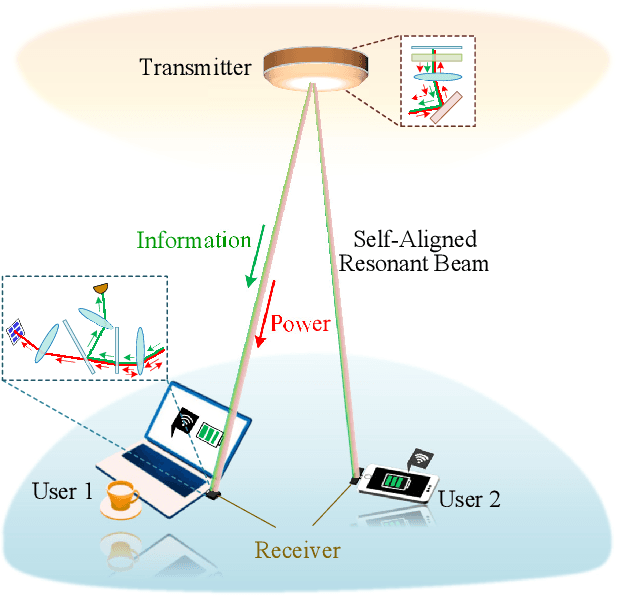
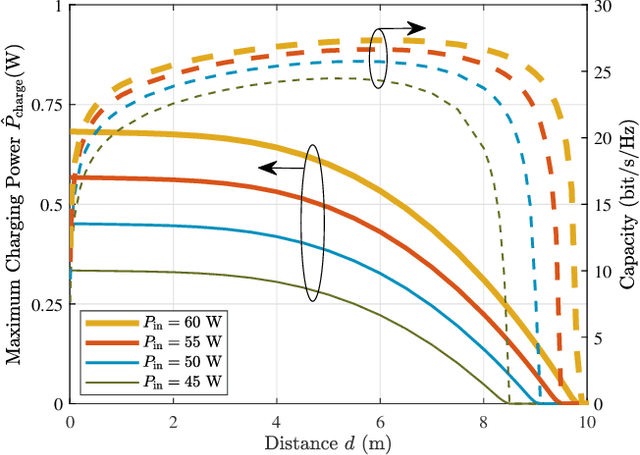
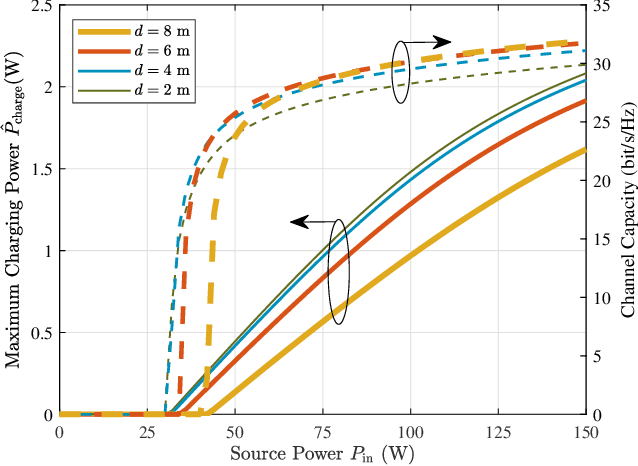
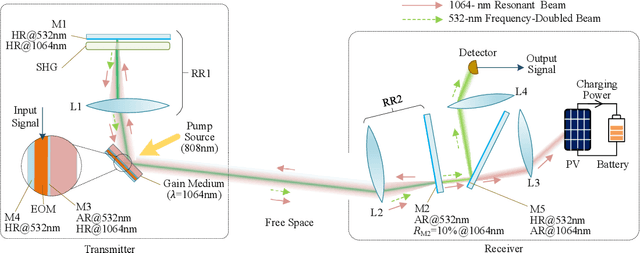
The increasing demands of power supply and data rate for mobile devices promote the research of simultaneous information and power transfer (SWIPT). Optical SWIPT, as known as simultaneous light information and power transfer (SLIPT), can provide high-capacity communication and high-power charging. However, light emitting diodes (LEDs)-based SLIPT technologies have low efficiency due to energy dissipation over the air. Laser-based SLIPT technologies face the challenge in mobility, as it needs accurate positioning, fast beam steering, and real-time tracking. In this paper, we propose a mobile SLIPT scheme based on spatially separated laser resonator (SSLR) and intra-cavity second harmonic generation (SHG). The power and data are transferred via separated frequencies, while they share the same self-aligned resonant beam path, without the needs of receiver positioning and beam steering. We establish the analysis model of the resonant beam power and its second harmonic power. We also evaluate the system performance on deliverable power and channel capacity. Numerical results show that the proposed system can achieve watt-level battery charging power and above 20-bit/s/Hz communication capacity over 8-m distance, which satisfies the requirements of most indoor mobile devices.
A Multimodal Deep Learning Model for Cardiac Resynchronisation Therapy Response Prediction
Jul 20, 2021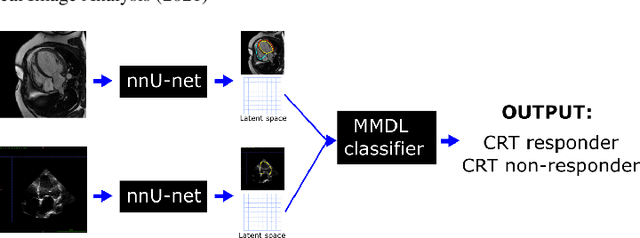
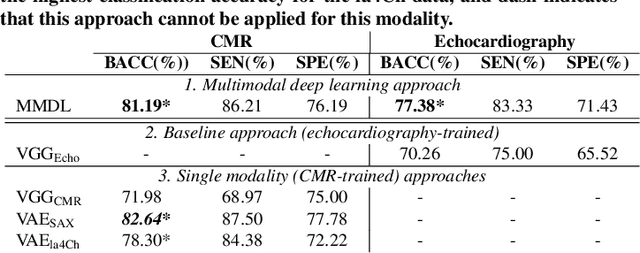
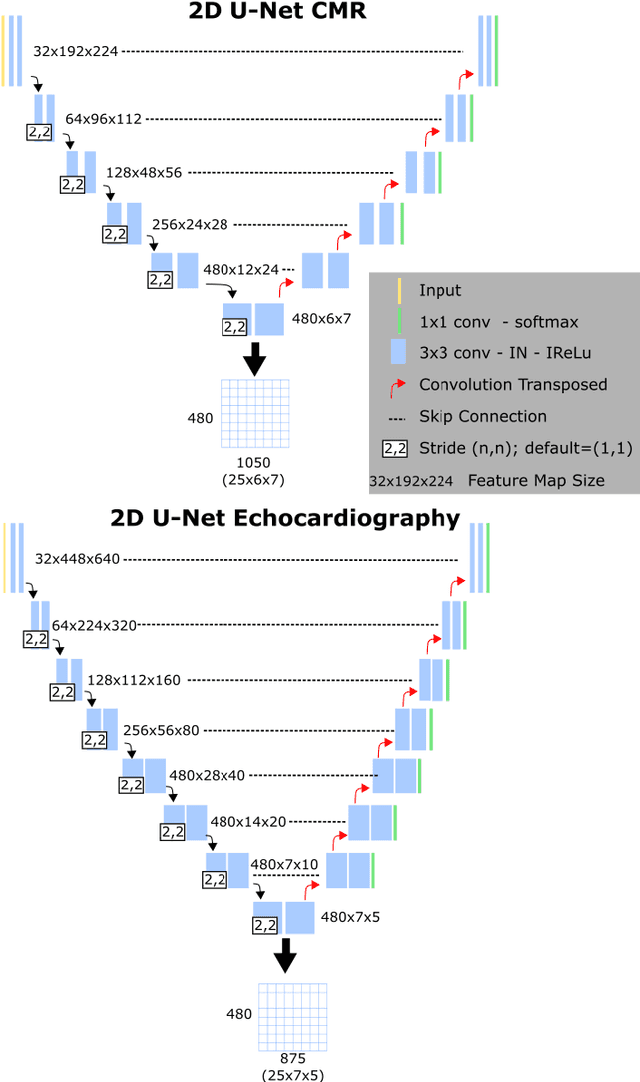
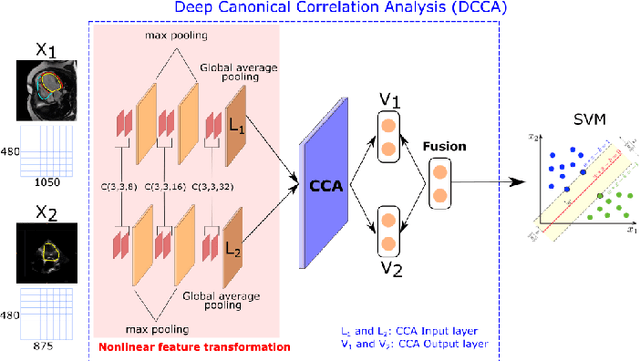
We present a novel multimodal deep learning framework for cardiac resynchronisation therapy (CRT) response prediction from 2D echocardiography and cardiac magnetic resonance (CMR) data. The proposed method first uses the `nnU-Net' segmentation model to extract segmentations of the heart over the full cardiac cycle from the two modalities. Next, a multimodal deep learning classifier is used for CRT response prediction, which combines the latent spaces of the segmentation models of the two modalities. At inference time, this framework can be used with 2D echocardiography data only, whilst taking advantage of the implicit relationship between CMR and echocardiography features learnt from the model. We evaluate our pipeline on a cohort of 50 CRT patients for whom paired echocardiography/CMR data were available, and results show that the proposed multimodal classifier results in a statistically significant improvement in accuracy compared to the baseline approach that uses only 2D echocardiography data. The combination of multimodal data enables CRT response to be predicted with 77.38% accuracy (83.33% sensitivity and 71.43% specificity), which is comparable with the current state-of-the-art in machine learning-based CRT response prediction. Our work represents the first multimodal deep learning approach for CRT response prediction.
Learning in Modal Space: Solving Time-Dependent Stochastic PDEs Using Physics-Informed Neural Networks
May 03, 2019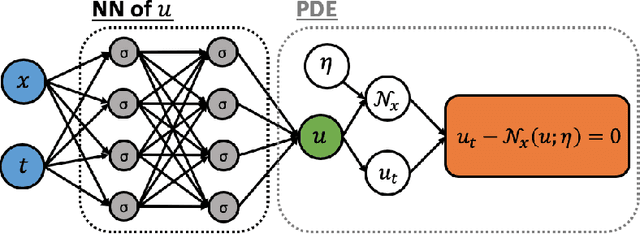

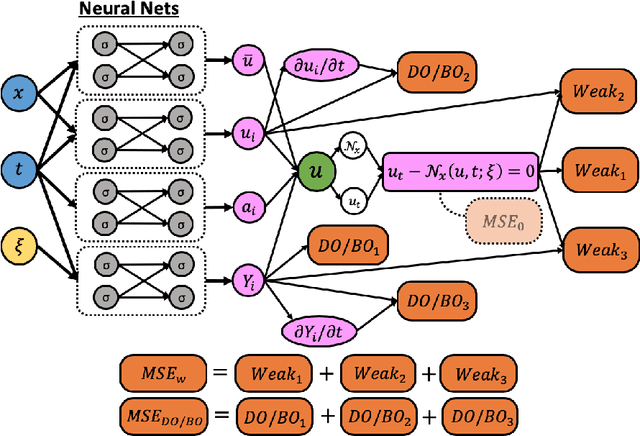

One of the open problems in scientific computing is the long-time integration of nonlinear stochastic partial differential equations (SPDEs). We address this problem by taking advantage of recent advances in scientific machine learning and the dynamically orthogonal (DO) and bi-orthogonal (BO) methods for representing stochastic processes. Specifically, we propose two new Physics-Informed Neural Networks (PINNs) for solving time-dependent SPDEs, namely the NN-DO/BO methods, which incorporate the DO/BO constraints into the loss function with an implicit form instead of generating explicit expressions for the temporal derivatives of the DO/BO modes. Hence, the proposed methods overcome some of the drawbacks of the original DO/BO methods: we do not need the assumption that the covariance matrix of the random coefficients is invertible as in the original DO method, and we can remove the assumption of no eigenvalue crossing as in the original BO method. Moreover, the NN-DO/BO methods can be used to solve time-dependent stochastic inverse problems with the same formulation and computational complexity as for forward problems. We demonstrate the capability of the proposed methods via several numerical examples: (1) A linear stochastic advection equation with deterministic initial condition where the original DO/BO method would fail; (2) Long-time integration of the stochastic Burgers' equation with many eigenvalue crossings during the whole time evolution where the original BO method fails. (3) Nonlinear reaction diffusion equation: we consider both the forward and the inverse problem, including noisy initial data, to investigate the flexibility of the NN-DO/BO methods in handling inverse and mixed type problems. Taken together, these simulation results demonstrate that the NN-DO/BO methods can be employed to effectively quantify uncertainty propagation in a wide range of physical problems.
Inferring micro-bubble dynamics with physics-informed deep learning
May 15, 2021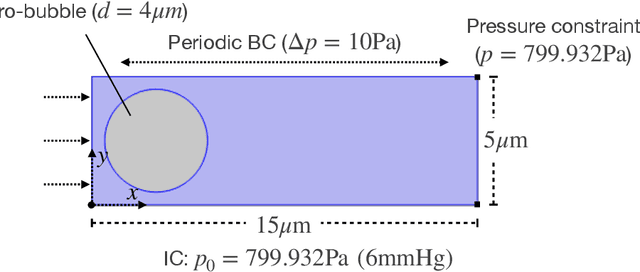
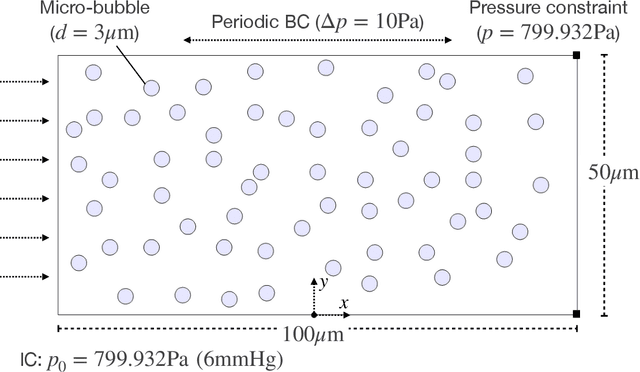
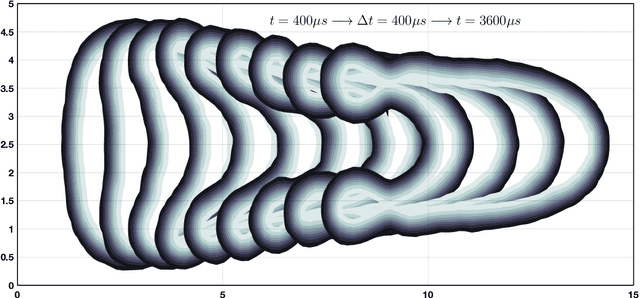
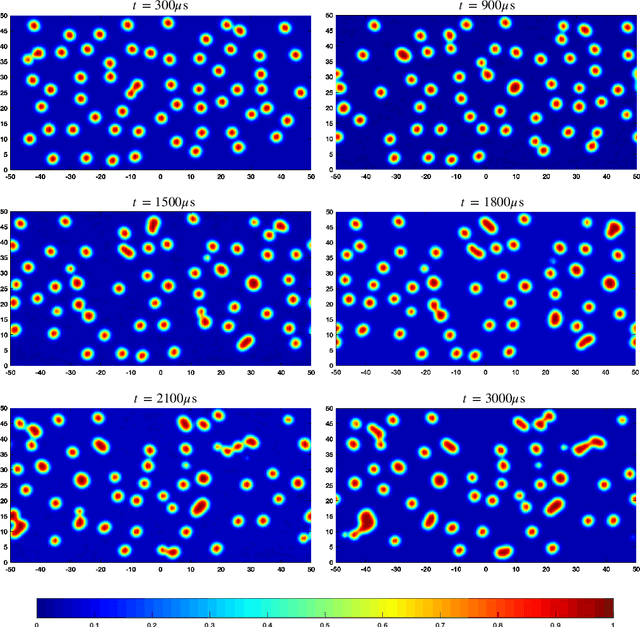
Micro-bubbles and bubbly flows are widely observed and applied to medicine, involves deformation, rupture, and collision of bubbles, phase mixture, etc. We study bubble dynamics by setting up two numerical simulation cases: bubbly flow with a single bubble and multiple bubbles, both confined in the microtube, with parameters corresponding to their medical backgrounds. Both the cases have their medical background applications. Multiphase flow simulation requires high computation accuracy due to possible component losses that may be caused by sparse meshing during the computation. Hence, data-driven methods can be adopted as a useful tool. Based on physics-informed neural networks (PINNs), we propose a novel deep learning framework BubbleNet, which entails three main parts: deep neural networks (DNN) with sub nets for predicting different physics fields; the physics-informed part, with the fluid continuum condition encoded within; the time discretized normalizer (TDN), an algorithm to normalize field data per time step before training. We apply the traditional DNN and our BubbleNet to train the simulation data and predict the physics fields of both the two bubbly flow cases. Results indicate our framework can predict the physics fields more accurately, estimating the prediction absolute errors. The proposed network can potentially be applied to many other engineering fields.
Q-SMASH: Q-Learning-based Self-Adaptation of Human-Centered Internet of Things
Jul 13, 2021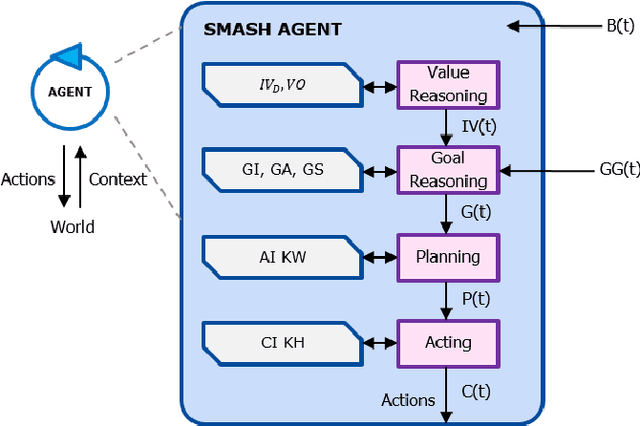
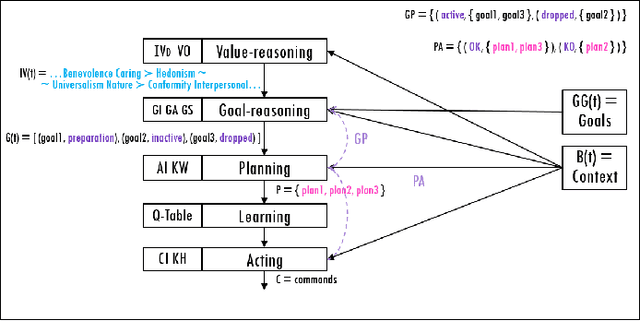
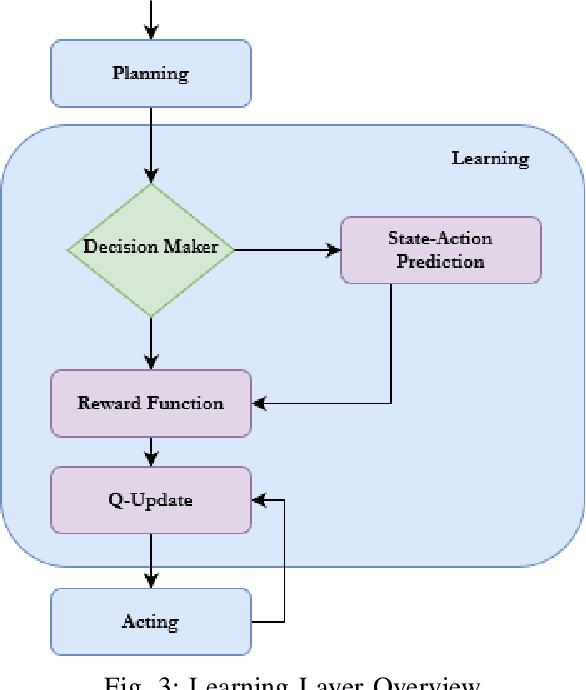
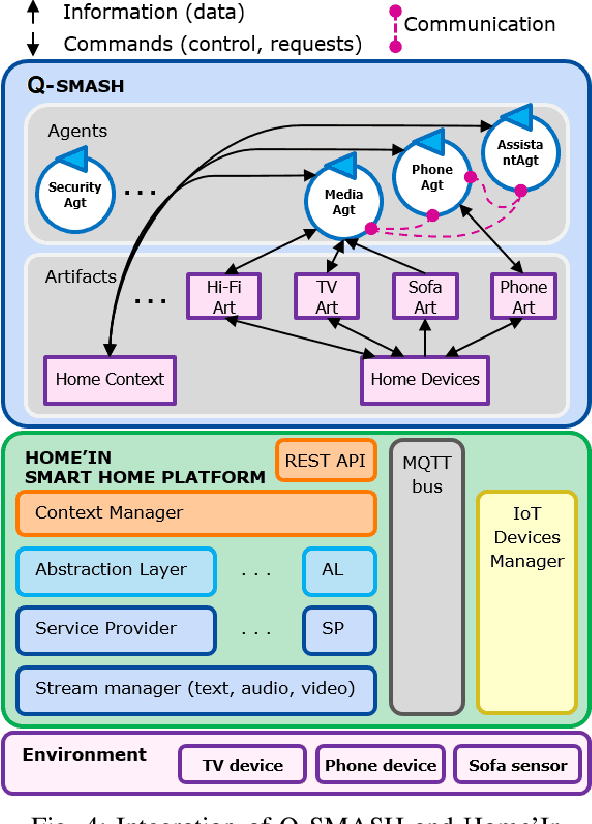
As the number of Human-Centered Internet of Things (HCIoT) applications increases, the self-adaptation of its services and devices is becoming a fundamental requirement for addressing the uncertainties of the environment in decision-making processes. Self-adaptation of HCIoT aims to manage run-time changes in a dynamic environment and to adjust the functionality of IoT objects in order to achieve desired goals during execution. SMASH is a semantic-enabled multi-agent system for self-adaptation of HCIoT that autonomously adapts IoT objects to uncertainties of their environment. SMASH addresses the self-adaptation of IoT applications only according to the human values of users, while the behavior of users is not addressed. This article presents Q-SMASH: a multi-agent reinforcement learning-based approach for self-adaptation of IoT objects in human-centered environments. Q-SMASH aims to learn the behaviors of users along with respecting human values. The learning ability of Q-SMASH allows it to adapt itself to the behavioral change of users and make more accurate decisions in different states and situations.
State and Topology Estimation for Unobservable Distribution Systems using Deep Neural Networks
Apr 15, 2021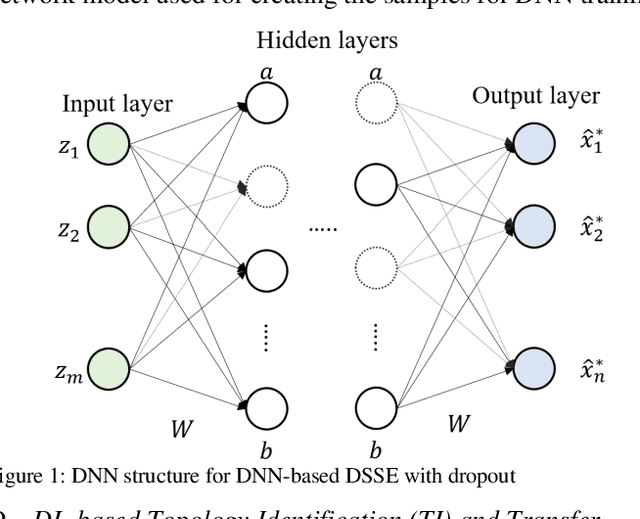
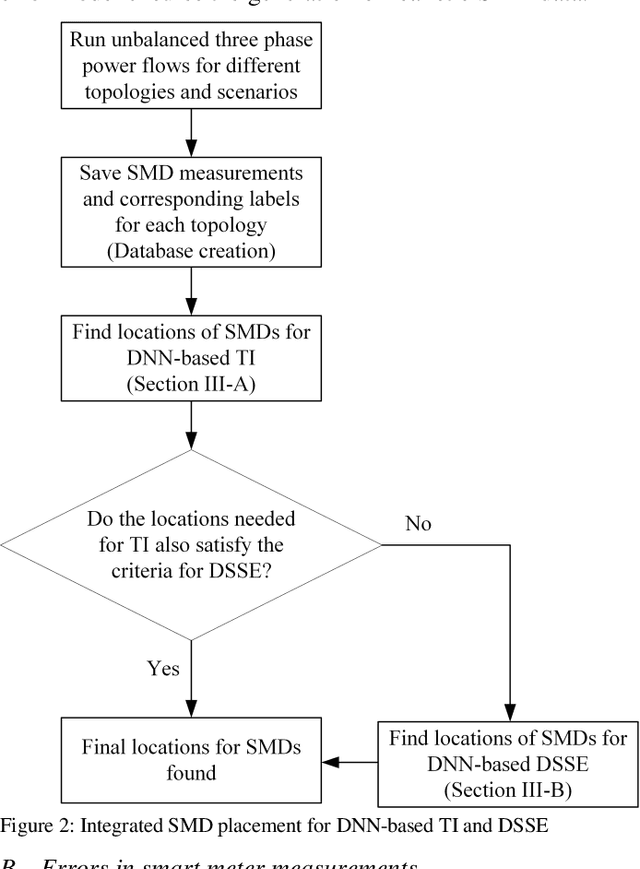
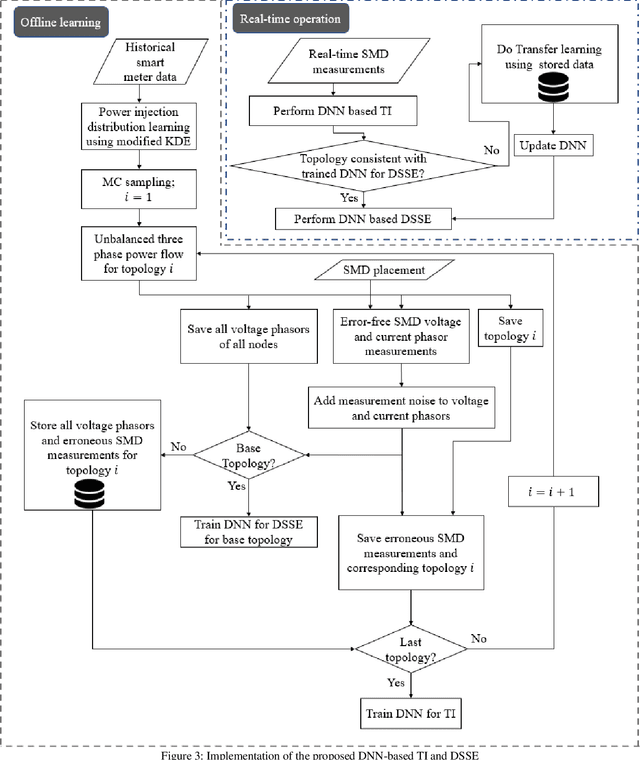
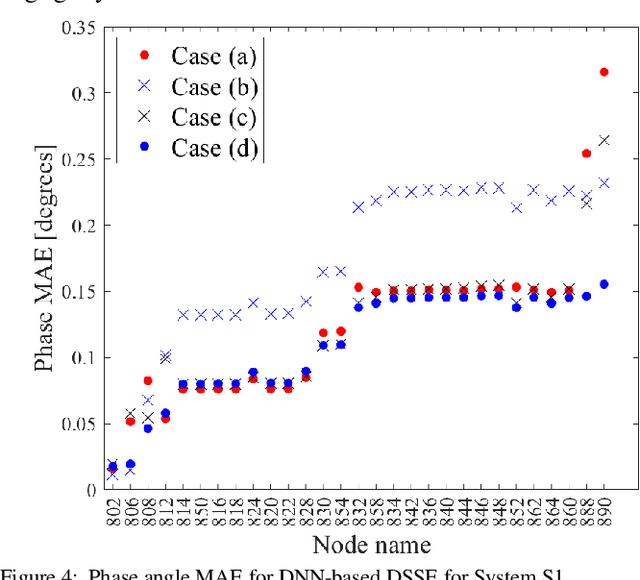
Time-synchronized state estimation for reconfigurable distribution networks is challenging because of limited real-time observability. This paper addresses this challenge by formulating a deep learning (DL)-based approach for topology identification (TI) and unbalanced three-phase distribution system state estimation (DSSE). Two deep neural networks (DNNs) are trained to operate in a sequential manner for implementing DNN-based TI and DSSE for systems that are incompletely observed by synchrophasor measurement devices (SMDs). A data-driven approach for judicious measurement selection to facilitate reliable TI and DSSE is also provided. Robustness of the proposed methodology is demonstrated by considering realistic measurement error models for SMDs as well as presence of renewable energy. A comparative study of the DNN-based DSSE with classical linear state estimation (LSE) indicates that the DL-based approach gives better accuracy with a significantly smaller number of SMDs
Near-optimal inference in adaptive linear regression
Jul 05, 2021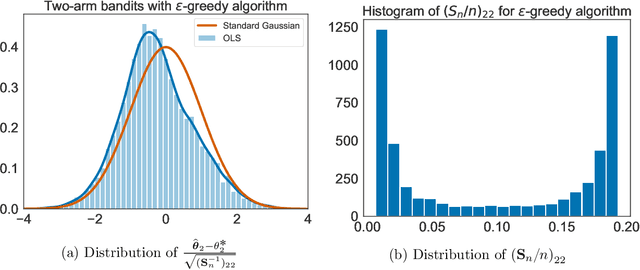
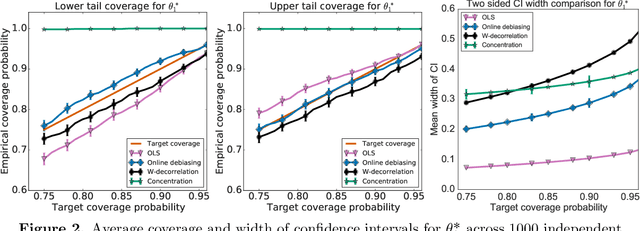
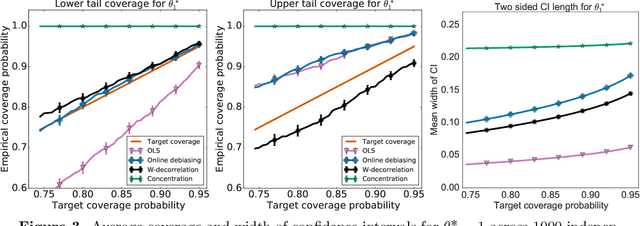
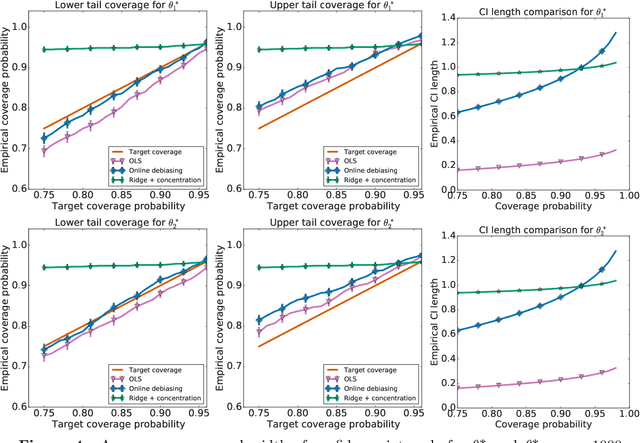
When data is collected in an adaptive manner, even simple methods like ordinary least squares can exhibit non-normal asymptotic behavior. As an undesirable consequence, hypothesis tests and confidence intervals based on asymptotic normality can lead to erroneous results. We propose an online debiasing estimator to correct these distributional anomalies in least squares estimation. Our proposed method takes advantage of the covariance structure present in the dataset and provides sharper estimates in directions for which more information has accrued. We establish an asymptotic normality property for our proposed online debiasing estimator under mild conditions on the data collection process, and provide asymptotically exact confidence intervals. We additionally prove a minimax lower bound for the adaptive linear regression problem, thereby providing a baseline by which to compare estimators. There are various conditions under which our proposed estimator achieves the minimax lower bound up to logarithmic factors. We demonstrate the usefulness of our theory via applications to multi-armed bandit, autoregressive time series estimation, and active learning with exploration.
 Add to Chrome
Add to Chrome Add to Firefox
Add to Firefox Add to Edge
Add to Edge